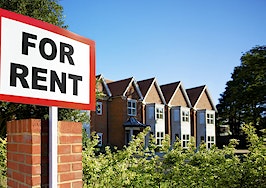New York City ranks third to last when it comes to economic and real estate prospects, according to a recent JPMorgan analysis.
The Big Apple ranks behind 18 other cities, including Boston, Seattle, and Boise, Idaho, when it comes to factors such as post-COVID urban recovery, commercial real estate, mass transit, crime, outmigration, and work-from-home trends, according to Michael Cemblast, chairman of market and investment strategy at JPMorgan.
New York City ranked above only Chicago, Detroit, and San Francisco, according to Cemblast’s analysis.
Cemblast, a native New Yorker, conducted the study at the request of a CEO client. He recommended that New York City be treated “the way an asset manager might treat a megacap stock in a diversified portfolio … the risks argue against too much concentration for corporate or real estate entities.”
His report notes that some measures of New York City show promise, such as high levels of total employment, airport utilization and seated restaurant diners, along with low crime levels for a city of its size.
However, the city still faces many struggles, according to Cemblast, including:
- Current mass-transit use at 73 percent of 2019 levels is “unsustainable given required capital and operating costs.”
- Office vacancy of 18 percent is the highest since the early 1990s.
- Office-to-residential conversions “are unlikely to materially reduce the stock of underutilized office space given cost and complexity.”
- “Zoning restrictions are particularly burdensome at a time when flexibility is paramount in a post-COVID world.”
- “The asylum influx threatens to substantially impair the city’s financial situation” at a time when it needs to substantially re-invest in infrastructure and housing.
Chiefly, the city is being dragged down by a weak economic recovery post-pandemic, structural problems related to its business conditions and poor fiscal health, according to Cemblast.
To aid the city’s recovery, urban policy experts Cemblast consulted for the study recommended the city overhaul its zoning code through upzoning; facilitate more public/private partnerships to fill in a “skills gap” and reduce structural unemployment; negotiate PILOT payments from tax-exempt owners of New York City real estate such as Columba University, the city’s biggest landowner; and encourage more migration to New York City by reducing state occupational licensing requirements.













